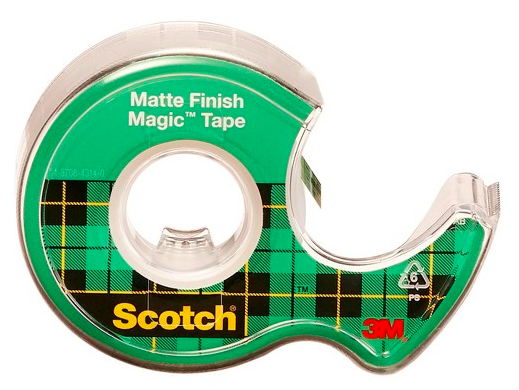The Casual Slur in Your Utility Drawer

Somewhere in your house right now, there’s probably a drawer with all sorts of weird odds-and-ends. Pens, maybe some postage stamps, a screwdriver, perhaps some loose change, and most importantly (for our purposes, at least), Scotch tape. This transparent adhesive has been around since the 1930s and has — pardon the pun — stuck around ever since.
But it’s not named for its inventor. It’s named for an anti-Scottish stereotype.
In 1925, an engineering school dropout named Richard Gurley Drew was working in St. Paul for a company then named Minnesota Mining and Manufacturing. At the time, the company now known as 3M was primarily focused on making sandpaper, and Drew was a research assistant working on improving the company’s core offering. Drew, despite his lack of success in school, nevertheless had a knack for developing new products. As the National Inventors Hall of Fame explains, while making a sandpaper delivery, “he noticed painters having difficulty masking car parts because the paint peeled off when the tape was removed.” So he got to work finding a solution, and he came up with a pressure-sensitive adhesive — a gentler goo which only bound to a new surface when pushed down on, and pulled off easily. He added that to a roll of tape and at that moment, masking tape was born.
Almost.
It didn’t work as drew had hoped — at least not right away. His product, according to an MIT report, “had adhesive along its edges but not in the middle” and, as a result, it wasn’t quite sticky enough. At least one of the auto painters who tested his new product was displeased, and one of them, in particular, let Drew know it. Reports differ on what he actually said, specifically. The New York Times has him asking “Why so Scotch with the adhesive?” while that MIT page quotes him as proclaiming “Take this tape back to those Scotch bosses of yours and tell them to put more adhesive on it!” Either way, though, there’s that word — Scotch.
It wasn’t meant kindly. As the TV Tropes wiki notes, “Scottish people are also often stereotyped as being thrifty, if not outright stingy, with their money and belongings.” That’s no surprise to anyone who watched DuckTales in the 1980s; you’ll certainly remember the financial habits of the central character, a Scottish billionaire Pekin duck named Scrooge McDuck. (Forbes, in 2013, estimated his net worth at north of $65 billion, and he wasn’t known for sharing.) But while the stereotype is, like most stereotypes, more slur than science, Drew wasn’t offended — he was inspired, and decided to borrow the moniker for his product. Initially, 3M’s entire line of tape was marketed under the “Scotch” brand, including masking tape. When Drew invented cellophane tape in 1930, 3M included it under the Scotch umbrella.
Today, 3M still markets all of its tape products under the “Scotch” brand, but the term has become a genericized name, often applying to cellophane tape from all manufacturers. 3M, for sure, objects to this misuse, but people from Scotland should really be the ones with the problem with the name.
Bonus fact: “Scot-free,” meaning “without suffering any punishment or injury,” isn’t an anti-Scottish slur. “Scot,” in this case, is most likely a reference to an Old Norse word for a tax that one had to pay to the crown.
From the Archives: Make Your Own X-Rays: The secret ingredient is Scotch tape.
